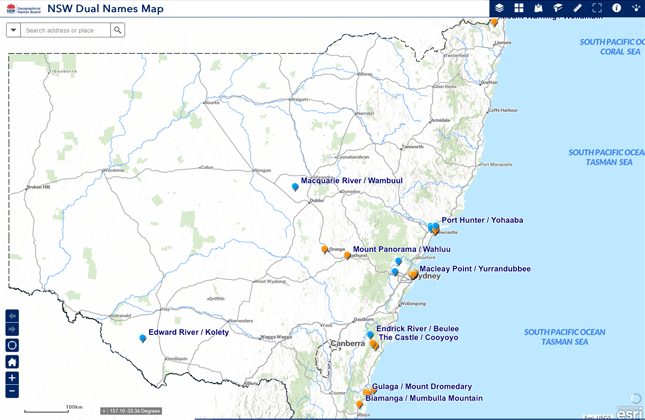Every Australian shares a relationship to the land and the names we give to places carry profound significance, capturing their history and contributing to our collective identity.
The languages of the first peoples of the land are an integral part of the world’s oldest living culture and connect Aboriginal people to each other and to their land. The Geographical Names Board (GNB) acknowledges that Aboriginal people are the custodians of Aboriginal Languages and have the right to control their growth and nurturing.
The right to decide the use of names rests with the Aboriginal people whose language or place names are being used for official naming purposes and requires consultation with communities before proposing a dual name. This ensures the name is in local language and has supportive historic evidence in the form of written or oral tradition.
Since June 2001 the New South Wales (NSW) Government has supported a dual naming policy for geographical features and cultural sites and is committed to recognising our Aboriginal cultural heritage. The GNB prefers the use of traditional Aboriginal place names for geographical features in NSW and is assisting Aboriginal communities to register traditional place names so that they sit side by side with existing non-Aboriginal names.
When a feature already has an official non-Aboriginal name, the traditional Aboriginal name can also be recognised officially by assigning it as a dual name which enables the story and culture of the local Aboriginal community to be shared. This means the feature has two names, an Aboriginal name and a non-Aboriginal name, each existing in their own right.
A dual name can be used individually or combined, for example:
- Wambuul
- Macquarie River
- Wambuul / Macquarie River
- Macquarie River / Wambuul
Dual naming does not apply to towns, roads, localities or other administrative areas such as a reserve or state forest.
Important links



